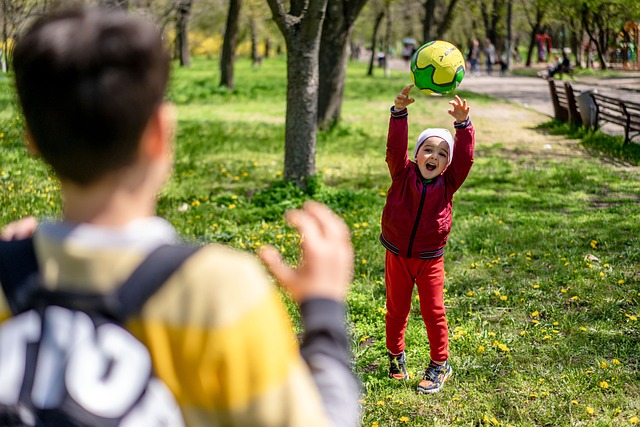Child abuse and neglect have severe long-term effects. Preventing these issues requires understanding definitions, recognizing signs of abuse, and implementing child safety tips. Key strategies include online safety for kids, family safety plans, and safety education for children. Child protection laws play a vital role in creating safe environments, with open communication fostering a culture of vigilance. By combining legal frameworks, education, and family preparedness, we can protect children from harm and promote their well-being.
Child abuse and neglect are serious issues that demand immediate attention. Understanding the signs and types of these heinous acts is the first step towards preventing them. This article offers comprehensive professional tips, encompassing digital age safety measures, legal frameworks, and educational initiatives, to help parents, caregivers, and communities protect children from harm and foster safe environments. By implementing these child safety tips, we can collectively contribute to ensuring child security and preventing child injury.
Understanding Child Abuse and Neglect: Signs and Types
Child abuse and neglect are significant issues that can have lasting impacts on a child’s well-being and development. Understanding what constitutes child abuse and neglect is the first step in preventing it. Child abuse refers to any act or omission by a caregiver that causes harm, while neglect involves a failure to meet a child’s basic physical, emotional, or medical needs. This can manifest in various forms: physical abuse includes hitting, burning, or shaking a child; emotional abuse involves verbal aggression, belittling, or ignoring a child’s emotional needs; and sexual abuse is any non-consensual sexual act involving a minor. Neglect can be physical, such as lack of food, clean water, or shelter, or emotional, like not providing love, support, or supervision.
Recognizing the signs of child abuse or neglect is crucial for implementing child safety tips and protecting children from harm. These signs may include unusual behavior changes, fear of certain people or places, physical injuries without apparent explanations, or a lack of personal hygiene. Online safety for kids is also paramount as predators may use the internet to groom and exploit vulnerable children. Child protection laws and safety education for children are essential tools in fostering safe environments. Families should develop comprehensive family safety plans that include emergency contacts, meeting spots, and communication strategies to ensure child security.
Child Safety Tips for Parents and Caregivers
Parenting and caring for children comes with a significant responsibility to ensure their safety and well-being. Implementing robust child safety tips is crucial in fostering a secure environment, especially as kids spend more time online. Protecting children from harm involves a multi-faceted approach; starting with education on online safety for kids, understanding the signs of potential abuse, and establishing clear boundaries. Regularly reviewing and updating child protection laws is essential to keep up with evolving digital landscapes, ensuring that every effort is made to safeguard our young ones.
Fostering safe environments requires active participation from parents, caregivers, and the community. Teaching children about personal safety, empowering them to recognize and report potential threats, and creating open lines of communication are powerful tools in prevention. Safety education for children should include basic self-defense techniques, understanding privacy settings on digital devices, and recognizing the importance of sharing location information with trusted adults. Additionally, developing family safety plans can provide a sense of security, offering strategies to handle emergencies and promoting a culture of vigilance and support.
Online Safety Measures for Kids: Protecting Children in the Digital Age
In today’s digital era, online safety measures are crucial in protecting children from harm and potential child abuse. Educating kids about internet safety is essential; they should understand the risks associated with sharing personal information, engaging with strangers, and recognizing inappropriate content. Implementing parental controls and monitoring software can help restrict access to harmful websites and apps, ensuring a safer online environment. Regular conversations about cyberbullying, privacy settings, and responsible online behavior are key to fostering safe digital habits.
Children should be taught to report any suspicious activity or interactions they encounter online. Familiarizing them with reporting mechanisms and trusted adults who can assist is vital. Additionally, creating comprehensive family safety plans that include digital guidelines and open communication fosters an environment where children feel secure. Staying informed about the latest online trends and potential risks enables parents and caregivers to stay one step ahead in protecting their children from digital child abuse and ensuring their overall well-being.
Creating a Safe Environment: Legal Frameworks, Education, and Family Preparedness
Creating a safe environment is a multifaceted endeavor in the realm of child abuse and neglect prevention. Legal frameworks play a crucial role by establishing strict child protection laws that mandate reporting suspected cases of abuse and neglect, ensuring that authorities can intervene promptly. These laws also provide guidelines for investigations, court proceedings, and support services to protect children and hold perpetrators accountable.
Education is another vital component. Incorporating child safety tips into school curricula and community outreach programs equips both children and adults with the knowledge to recognize potential risks and respond appropriately. Safety education for children emphasizes online safety, personal boundaries, and reporting mechanisms, empowering them to protect themselves from harm. Additionally, family preparedness is essential; encouraging families to establish comprehensive safety plans, including emergency contacts and escape routes, fosters a culture of vigilance and proactive child protection.
Protecting our children from harm is a collective responsibility that requires a multi-faceted approach. By understanding the signs and types of child abuse and neglect, implementing robust safety measures like online monitoring and digital literacy, and creating safe environments through legal frameworks, education, and family preparedness, we can foster a culture where every child feels secure and valued. Adopting these professional tips for child safety ensures that we proactively prevent child abuse, nurture healthy development, and safeguard our future.
